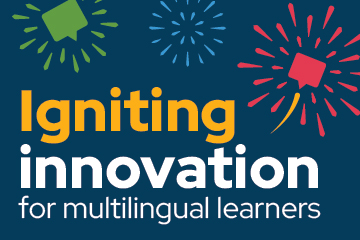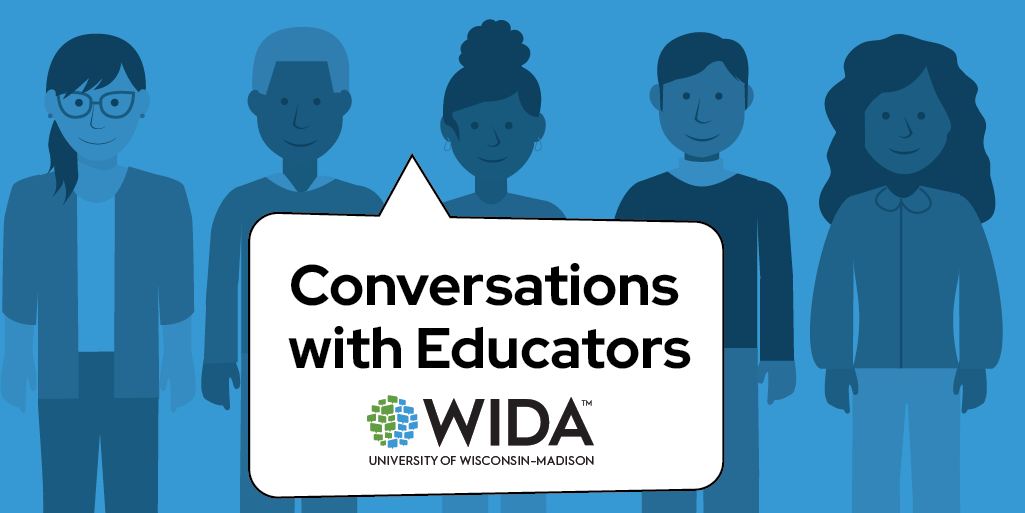Resources/Recursos
Featured Resources



All resources/Todos los recursos
Filter resources by:
Resources/Recursos
Annual Technical Report for Alternate ACCESS for ELLs English Language Proficiency Test, Series 602, 2023-2024 Administration
Alternate ACCESS for ELLs technical reports provide evidence for validity and reliability of Alternate ACCESS for ELLs and support intended uses, interpretations and decisions made with the test.
This is the redacted report for the 2023-2024 administration of Alternate ACCESS for ELLs. Item information is removed from the report.
Resource Details View Download NowReleased June 2025
The Marco ALE de WIDA: A sociocultural approach to the creation of Spanish language arts standards
This WIDA Snapshot introduces the Marco de referencia de las artes del lenguaje del español de WIDA: Aplicación para la actualización y desarrollo de estándares (Marco ALE). The Marco ALE is a Spanish language arts framework and is designed to support the development of Spanish language arts standards specifically for educational settings in the United States.
Resource DetailsReleased May 2025
Tell Us About Your Child Survey
The Tell Us About Your Child Survey is a questionnaire that educators can give to families or caregivers of multilingual learners with the most significant cognitive disabilities to better understand a student's language and communication needs. In the survey, families or caregivers will answer questions about a student’s method of communication and language, their ability to understand communication and their preferred communication supports.
Resource DetailsReleased May 2025
Curriculum Amplification Guide and Template
The Curriculum Amplification Guide and Template supports educators as they work to align their academic curricula to the WIDA English Language Development (ELD) Standards Framework, 2020 Edition. It guides educators through three analysis criteria to examine the strength of alignment and guiding questions to support amplifying the alignment across all units of an academic curriculum.
This template is an extension of the WIDA Focus Bulletin Taking a Genre-Based Approach to Curricular Development Using the Curriculum Amplification Guide. To learn more, we encourage you to read the Focus Bulletin.
Resource Details View Download NowReleased May 2025
Taking a Genre-Based Approach to Curricular Development Using the Curriculum Amplification Guide
Implementing the WIDA ELD Standards Framework takes time and looks different across different contexts. While some educators are working with different grade-level content curricula, English language specialists may be working with language curricula focusing on a range of proficiency levels. When instructing multilingual learners, it is especially important that curricula strike a balance between content and language. Although it is tempting to start at the lesson level to begin implementation since it feels more manageable to start small, starting at the curricular level is more effective at building a yearlong, cohesive learning experience that builds on current knowledge and experiences and more intentionally towards new understandings and skills. This Focus Bulletin supports educators to take a genre-based approach to making decisions throughout all units of curricula that can both begin and deepen the alignment of the current academic curricula being used to the WIDA ELD Standards Framework.
Resource Details View Download NowReleased May 2025
WIDA Speaking Scoring Scale Grades 1-12
Use this scoring scale to score speaking responses for WIDA Screener and the WIDA ACCESS Braille Speaking test only. To score WIDA ACCESS, refer to the WIDA Speaking Scoring Rubric Grades 1–12.
Note: WIDA will publish the brand-new WIDA Speaking Scoring Rubric Grades 1–12 in September 2025.
Resource Details View Download NowReleased May 2025
WIDA Writing Scoring Scale Grades 1-12
Use this scoring scale to score writing responses for WIDA Screener only.
Note: WIDA will publish the brand-new WIDA Writing Scoring Rubric Grades 1–12 in September 2025. This scoring rubric will be used to score WIDA ACCESS Grades 1-12 Writing test responses.
Resource Details View Download NowReleased May 2025
WIDA Speaking Rubric Kindergarten
Use this rubric to score speaking responses on WIDA Screener for Kindergarten and WIDA MODEL for Kindergarten only.
Resource Details View Download NowReleased May 2025
WIDA Writing Rubric Kindergarten
Use this rubric to score writing responses on WIDA Screener for Kindergarten and WIDA MODEL for Kindergarten only.
Resource Details View Download NowReleased May 2025
Strategies for Supporting Multilingual Newcomers
Multilingual newcomers are the fastest growing demographic across U.S. school systems, arriving in K-12 classrooms at increased rates in more and different locations than ever before. These students enter our buildings offering unique cultural and linguistic assets while also possessing distinct academic, social-emotional and linguistic needs. We met to discuss how we can build and strengthen systems that promote multilingual newcomers’ success in classrooms across the consortium! During this webinar, we talk about the latest trends relating to our nation's multilingual newcomers, engage in research-backed approaches centering their learning, and participate in goal setting for future programming with multilingual newcomers and their families in mind.
Resource DetailsReleased April 2025
WIDA MODEL Speaking Rubric Grades 1-12
Rubrics are analytic scales that describe various aspects of spoken and written language to help educators recognize what speaking and writing sound and look like at various levels of English language proficiency. Use the WIDA MODEL Speaking Rubric to understand the scores students earn on the assessment, analyze student performance in the classroom, and plan ways to scaffold language learning. WIDA MODEL test administrators use the WIDA MODEL Speaking Rubric to score the Speaking domain test for WIDA MODEL Online and WIDA MODEL Paper.
Resource Details View Download NowReleased April 2025
WIDA Alternate ACCESS Interpretive Guide for Score Reports
This guide provides a comprehensive explanation of the types of scores reported by Alternate ACCESS for students in grades K-12.
Resource Details View Download NowReleased March 2025
WIDA MODEL Writing Rubric Grades 1-12
Rubrics are analytic scales that describe various aspects of spoken and written language to help educators recognize what speaking and writing sound and look like at various levels of English language proficiency. Use the WIDA MODEL Writing Rubric to understand the scores students earn on the assessment, analyze student performance in the classroom, and plan ways to scaffold language learning. WIDA MODEL test administrators use the WIDA MODEL Writing Rubric to assign a Writing Final score for WIDA MODEL Paper and WIDA MODEL Online.
Resource Details View Download NowReleased February 2025
Understanding the Proficiency Level Descriptors of Marco DALE
Los descriptores del desempeño lingüístico in Marco DALE provide guidance on how bi/multilingual students can develop language that they can interpret, interact and express in each of the communication modes (interpretative, interactive and expressive).
Resource DetailsReleased February 2025
Action Research: A catalyst for comprehensive teaching and learning in multilingual contexts
This WIDA Snapshot introduces classroom action research – when researchers and educators work together to address classroom challenges – by encouraging teachers to use their researcher voices to make meaningful contributions to the field, whether through collaborative or independent approaches.
Resource DetailsReleased February 2025
The Key Language Uses in Bilingual Writing
This WIDA Webinar examines the Key Language Uses in writing in both Spanish and English. A WIDA expert explores an analysis of bilingual writing examples and mentor texts using the lens of the Key Language Uses and los usos clave del lenguaje del Marco DALE.
Resource DetailsReleased January 2025
Alternate Can Do Descriptors
The Alternate Can Do Descriptors (Alt Can Dos) are the first-ever Can Do Descriptors for multilingual learners with the most significant cognitive disabilities. The Alt Can Dos exemplify what students can do with communication and language at various stages of English language development.
The Alt Can Dos are arranged into the same grade-level clusters (K–2, 3–5, 6–8 and 9–12) as WIDA Alternate ACCESS. Within each grade-level cluster, the Alt Can Dos are organized by interpretive (listening and reading) and expressive (speaking and writing) communication modes for each WIDA ELD Standard and the five levels of English language development.
Resource Details View Download NowReleased October 2024
Introducing WIDA Screener for Kindergarten
This WIDA Screener for Kindergarten eSummit session recording provides an in depth look at the test.
Resource DetailsReleased October 2024
Using ACCESS for ELLs to Promote Beneficial Outcomes for English Learners Video
Released October 2024
Marco DALE Digital Explorer
This website serves as a digital database of the Marco de los estándares del desarrollo auténtico del lenguaje español de WIDA (Marco DALE). It categorizes Language Expectations in two ways: by the Marco DALE standard statement and grade-level clusters, and by the Key Language Use and communication mode. Proficiency Level Descriptors (PLDs) can be explored by grade level (K-1 and 2-12) and communication mode.
Resource DetailsReleased September 2024




